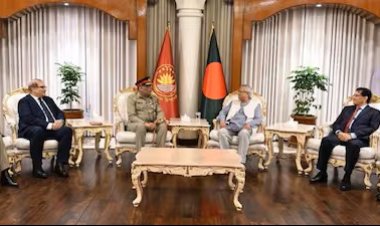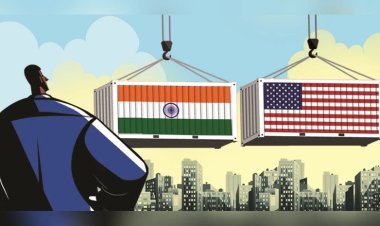Explained: India and the United Nations Convention on the Law of the Sea (UNCLOS)
On April 7 2021, the USS John Paul Jones asserted navigational rights and freedoms approximately 130 nautical miles west of the Lakshadweep Islands, inside India’s exclusive economic zone (EEZ). This elicited a stern reaction from the Indian government. The following article explains the aspects of Maritime Law and the other factors to govern and understand the US intrusion and its implications.

Explainer
Usanas Editorial Team
Facts: On April 7 2021, the USS John Paul Jones (DDG 53) asserted navigational rights and freedoms approximately 130 nautical miles west of the Lakshadweep Islands, inside India’s exclusive economic zone (EEZ). This elicited a stern reaction from the Indian government as the USA had violated India’s rules governing navigation in its EEZ.
Law: There are two applicable laws to the situation stated above — The United Nations Convention on the Law of the Sea (hereinafter referred to as UNCLOS) and The Territorial Waters, Continental Shelf, Exclusive Economic Zone Other Maritime Zones Act, 1976.
The Problem: Has the USA violated international law? Should the USA have taken permission from the Indian authorities before entering India’s Exclusive Economic Zone?
Explainer: The international community, through UNCLOS, recognized the desirability of establishing a legal order for the seas and oceans for the facilitation of international communication, promotion of peaceful usage of the seas and oceans, and the equitable and efficient utilization of their resources. It is an international agreement that enshrined customary maritime law and is universally acknowledged to have laid down laws and rules widely accepted by 167 member countries plus the EU. However, some of its provisions, especially those relating to passage through EEZ equally contentious and leaves open space for varied interpretation and self-perception by individual countries.
What is an Exclusive Economic Zone?
The Exclusive Economic Zone (EEZ) is an area beyond and adjacent to the territorial sea. It extends to a maximum of 200 nautical miles from the baseline from which the breadth of the territorial sea is measured. After 200 nautical miles, the sea is called the high sea and is open to all other states. Under the EEZ, a state — in this case, India — has the right and control over it. India can move its ships, fish, collect intelligence and exercise other sovereign rights.
However, under Article 58 of the UNCLOS, certain rights are enjoyed by the foreign countries in the Indian EEZ, which is where the problem arises. The 58(i) of the UNCLOS mentions the “freedoms referred to in article 87 of UNCLOS”, which deals with the high seas and the rights enjoyed by all parties, including the right to navigation. Article 87 gives power to all the states to move around the high seas, including armed ships. The right to navigation allows foreign ships to move in the Indian EEZ. The latter part of the act also spells out “other internationally lawful uses of the sea related to these freedoms.” UNCLOS states that there should be no violence and threat of violence or intelligence gathering while passing through the country’s EEZ. So, if the navigation is an “innocent passage”,—it is internationally lawful.
What is Innocent Passage?
The passage is innocent as long as it is not prejudicial to India's peace, good order or security. A foreign ship with weapons can have an innocent passage under the UNCLOS, but there are a few restrictions:
- There cannot be any threat, use of force, or practice of weapons;
- They cannot collect intelligence;
- Nothing can board or deboard the ship;
- Nothing can be loaded or unloaded.
If any of the above clauses are violated by a foreign ship, it is not considered an innocent passage and India can take measures against that party. However, UNCLOS is silent about certain aspects of the innocent passage and allows states to pass laws and regulations to fill those gaps. Such questions like ‘does a foreign ship need to take permission for an innocent passage?’ is left for states to answer.
The Confusion
India and the USA have fundamental differences in interpreting coastal states’ rights to stop foreign military ships from conducting military activities within their EEZ. India and China believe that states should have greater control over foreign military activities in their EEZ. The right of a coastal state to stop foreign ships from conducting military activities in its EEZ is not universally accepted. Such a right is not a formal part of international maritime law as articulated by the UNCLOS. Still, it appears in unilateral declarations made by countries when their accession to the convention. When India ratified UNCLOS in 1995, India declared that it was its understanding that the convention did not “authorize other states to carry out in the EEZ and in particular those including the use of weapons or explosions, without the consent of the coastal states”. India passed its domestic law — The Territorial Waters, Continental Shelf, Exclusive Economic Zone and Other Maritime Zones Act, 1976 (hereinafter referred to as Maritime Act) to support its views on the permissibility of foreign ships conducting military activities in its EEZ. Section 4(2) of the Maritime Act allows foreign warships to enter India’s EEZ after providing prior notice to the Central Government. The act does not specify for a “consent” or “permission”, and the prior notice requires no reply from the central government and is merely an intimation about the passage. Whereas the domestic law passed by the Chinese government requires “permission”.
UNCLOS is quite clear that while the exploitation of the resources of the EEZ and the seabed are the rights of the coastal state, there are no restrictions on the passage of foreign vessels, whether military or commercial, through them. Likewise, no prior notification is needed for “innocent passage” of military vessels through the actual territorial waters of the coastal state, i.e. covering a distance of 12 nautical miles from the coastline.
USA performed the Freedom of Navigation Operations (FONOPs) in the Indian EEZ. The idea behind the FONOP is to maintain international law and challenge any excessive maritime claims of countries. The current development seems unusual because this is the first time in recent memory that the US navy has publicly acknowledged that a military ship has entered India’s EEZ. Except for 2018, all previous reports show that there have been multiple intrusions without prior consent in a single year by the US military into India’s EEZ. But the FONOP releases challenged these claims in its annual reports every year. While they were documented annually, the U.S. Department of Defence had not publicised these operations related to India on a real-time basis.
What is an excessive maritime claim?
To understand and answer this question, we need to ask — from where do India’s 200 nautical miles start? India has notified baselines through a 2009 gazette notification, which included straight baselines around Lakshadweep to declare a new sea area as part of the country’s territorial waters. It consists of the strategic nine-degree channel that goes through the Lakshadweep group of islands and is part of the international shipping lane connecting the Gulf of Aden to South East Asia.
According to UNCLOS, only archipelagic states, like Indonesia, can use straight baselines to enclose island groups rather than continental states like India. The United States does not recognise India’s 2009 Gazette notification but has never specifically protested at the straight baselines around Lakshadweep. The location of the latest FONOP operation has also raised concern that it could be a challenge to India’s straight baselines enclosing Lakshadweep islands.
Conclusion: More than a diplomatic spat?
Washington considers India an important ally in upholding the rules-based order in the Indo-Pacific to counter Chinese aggressive actions. A burgeoning maritime partnership is taking shape, which will undoubtedly play a major role in shaping the regional order. Despite operating several FONOPs in Indian EEZ, the USA never resorted to such harsh language is, therefore, an aberration in the long-standing bilateral maritime times. The tone and tenor of the statement leads one to believe that it could have been obliquely directed at a competitor like China and not a strategic partner like India. USA’s lack of sensitivity and visible undermining of India’s stance on the UNCLOS has certainly caused unease in India’s strategic circles. Although the issue was resolved diplomatically by both sides and did not snowball into a fall-out between the Quad partners—it still exposed their differing interpretations of key maritime issues. There is great potential for both countries to work together in the Indo-Pacific. Still, both sides must address the hiccups emerging from the divergence in their respective strategic positions in the region.

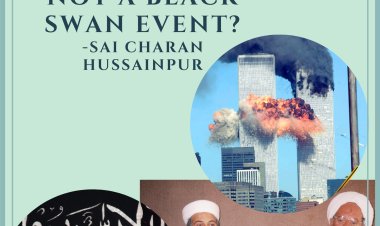

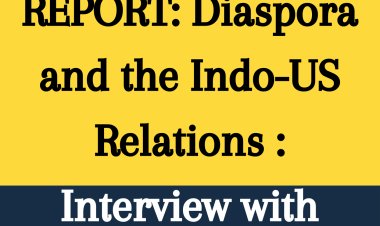

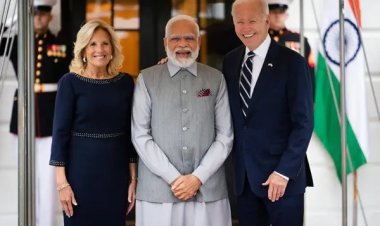

/media/img/mt/2020/06/Atlantic_Biden_foreign_pol_v1/original.png)










